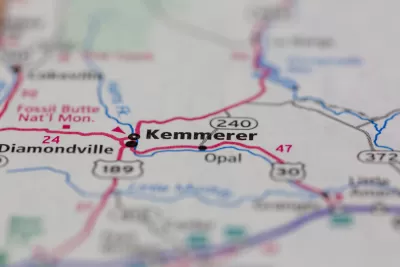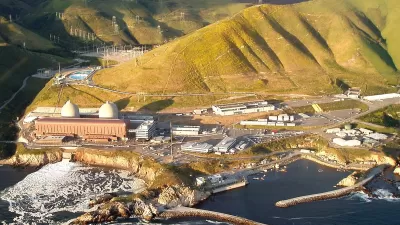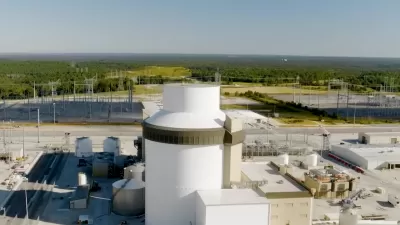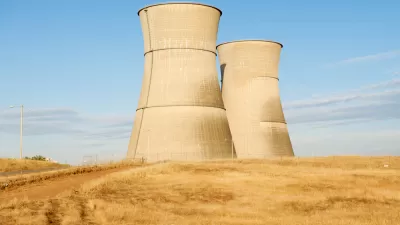Microsoft co-founder Bill Gates had shovel-in-hand for the groundbreaking of his company's small-scale nuclear power plant in Kemmerer, Wyoming, on June 10.

It was in 1978, 46 years ago, that the Shearon Harris Nuclear Power Plant in North Carolina began construction.
Unlike the Harris Nuclear Plant, which had a capacity of 860 megawatts when built, the pilot Natrium nuclear power plant in Kemmerer “is designed to generate a consistent 345 megawatts of power — enough energy to power about 250,000 homes — with a capability of ramping up to 500 megawatts for short periods, according to the Bellevue, Washington-based TerraPower,” reported Dustin Bleizeffer, who covers energy and climate for WyoFile, on June 10.
Rather than the industry’s existing standard of massive nuclear power plants that consume a lot of water, Natrium is much smaller and will use liquid sodium to cool the reactor.
Construction of the small modular reactor, posted here in November 2021, was delayed by the unprovoked invasion of Ukraine by Russia three months later, resulting in legislation last month affecting the fuel supply. Gates, appearing on CBS's Face the Nation on June 9, “noted that...suppliers in the United Kingdom and South Africa, along with an eventual supply from uranium mines in the U.S. and Canada will allow the project to go forward.”
A final note by Bleizeffer on the importance of the plant to Wyoming and a sign of the transition to cleaner fuels for the nation's largest coal-producing state.
The $4 billion construction project is also considered an economic lifeline for southwest Wyoming, particularly the adjacent towns of Kemmerer and Diamondville, a region impacted by fossil fuels’ decline.
Hat tip to Sammy Roth, climate columnist for the Los Angeles Times newsletter, Boiling Point.
FULL STORY: Microsoft’s Gates breaks ground on novel nuclear power plant in Wyoming

Alabama: Trump Terminates Settlements for Black Communities Harmed By Raw Sewage
Trump deemed the landmark civil rights agreement “illegal DEI and environmental justice policy.”

Planetizen Federal Action Tracker
A weekly monitor of how Trump’s orders and actions are impacting planners and planning in America.

Why Should We Subsidize Public Transportation?
Many public transit agencies face financial stress due to rising costs, declining fare revenue, and declining subsidies. Transit advocates must provide a strong business case for increasing public transit funding.

Understanding Road Diets
An explainer from Momentum highlights the advantages of reducing vehicle lanes in favor of more bike, transit, and pedestrian infrastructure.

New California Law Regulates Warehouse Pollution
A new law tightens building and emissions regulations for large distribution warehouses to mitigate air pollution and traffic in surrounding communities.

Phoenix Announces Opening Date for Light Rail Extension
The South Central extension will connect South Phoenix to downtown and other major hubs starting on June 7.
Urban Design for Planners 1: Software Tools
This six-course series explores essential urban design concepts using open source software and equips planners with the tools they need to participate fully in the urban design process.
Planning for Universal Design
Learn the tools for implementing Universal Design in planning regulations.
Caltrans
Smith Gee Studio
Institute for Housing and Urban Development Studies (IHS)
City of Grandview
Harvard GSD Executive Education
Toledo-Lucas County Plan Commissions
Salt Lake City
NYU Wagner Graduate School of Public Service





























